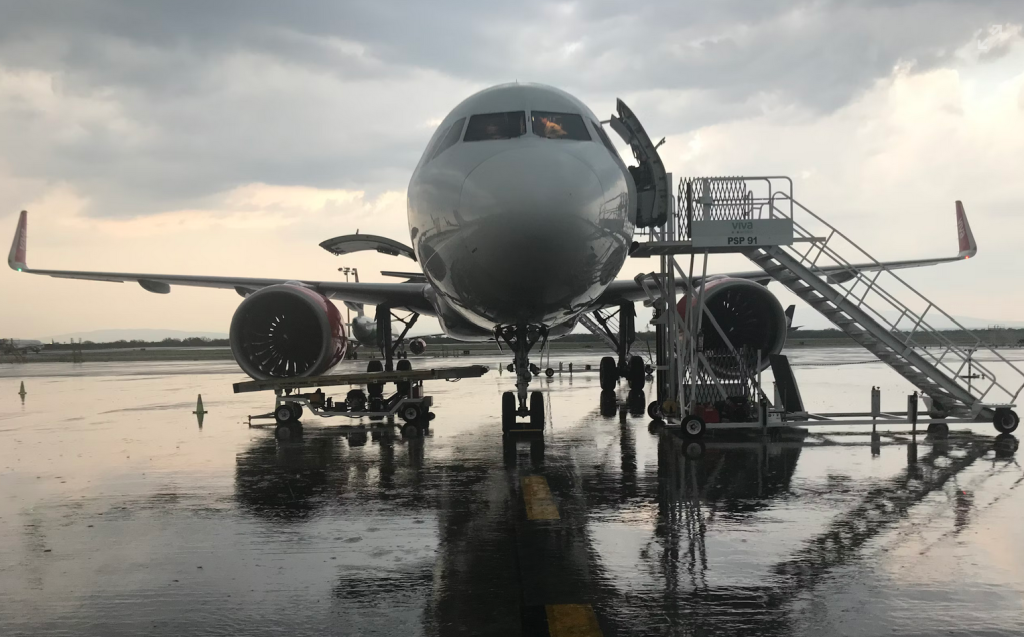The global airline industry is charting an impressive course, demonstrating remarkable resilience and improved profitability in 2025. This positive outlook, shared by the International Air Transport Association (IATA), signals a vibrant period of growth and innovation.

Right at the forefront of this exciting trajectory is the Middle East, positioned for an unparalleled travel boom. Air passenger numbers in the region are expected to more than double, soaring to an incredible 530 million by 2043. This phenomenal growth, revealed at the recent IATA Annual General Meeting, underscores the dynamic future of aviation here, with traffic projected to expand at an impressive average annual rate of 3.9% over the next two decades.
Looking at current performance, the region is already demonstrating strong momentum. Year-to-date demand for Middle East air travel (comparing January-April 2025 to the same period in 2024) saw a healthy 6% increase, perfectly in line with the global average. While air cargo experienced some unique challenges, the overall picture for passenger travel remains incredibly bright.
Stronger profits ahead
The wider airline industry is set to make significant strides in 2025. Net profits are projected to climb to a robust $36 billion, a fantastic jump from $32.4 billion in 2024. This translates to a healthier net profit margin of 3.7%, signaling a more robust financial footing for airlines worldwide. Total revenues are also set to reach a staggering record high of $979 billion!
Perhaps the most exciting news for travellers? Total passenger numbers are set to hit a monumental new record of 4.99 billion – that’s 4% more happy passengers taking to the skies than in 2024!
“The first half of 2025 has brought significant uncertainties to global markets. Nonetheless, by many measures including net profits, it will still be a better year for airlines than 2024, although slightly below our previous projections. The biggest positive driver is the price of jet fuel which has fallen 13% compared with 2024 and 1% below previous estimates. Moreover, we anticipate airlines flying more people and more cargo in 2025 than they did in 2024, even if previous demand projections have been dented by trade tensions and falls in consumer confidence. The result is an improvement of net margins from 3.4% in 2024 to 3.7% in 2025.” – Willie Walsh, IATA’s Director General
While profitability per passenger is a thin buffer at around $7.20, this highlights the critical role airlines play in supporting global economies and creating jobs. Policymakers are encouraged to keep this vital contribution in sharp focus.
Safety at the forefront
Safety is, and always will be, paramount. While the global accident rate saw a minor uptick in 2024 (1.13 per million flights), it remains well below the five-year average, serving as a crucial reminder that continuous vigilance is key.
Crucially, the Middle East and North Africa (MENA) region has shown a truly positive trend in safety. The all-accident rate dropped from 1.12 in 2023 to 1.08 in 2024. This significant improvement is a testament to the dedicated efforts across the region to strengthen oversight, standardise procedures, and cultivate a robust safety culture. Continued collaboration between regulators, airlines, and ground teams is absolutely essential to sustain this fantastic momentum and ensure the safest skies for everyone.
A unified vision for growth
While the Middle East is already a global aviation powerhouse, discussions at the IATA AGM highlighted exciting opportunities to elevate the region’s network even further. The vision is clear – to foster a more integrated and harmonised aviation market that truly unlocks its full potential.
It’s recognised that development across the region isn’t entirely even, with challenges like ongoing conflicts and airspace restrictions sometimes impacting operations. However, aviation here has shown remarkable resilience! These challenges are seen not as roadblocks, but as opportunities to strengthen the network and streamline operations. For instance, addressing overflight restrictions can lead to more direct routes, boosting efficiency and contributing positively to environmental goals by reducing emissions.
Furthermore, efforts are underway to bridge economic disparities within the region. While the GCC states boast world-class hubs and fleets, there’s a concerted push for a coordinated regional approach to support lower-income countries, ensuring that everyone benefits from enhanced air access and robust aviation infrastructure.
Smart skies for a seamless future

To achieve this ambitious vision, several priority areas are being championed, all focused on creating a more connected, efficient, and traveller-friendly environment:
- An integrated air transport market: The goal is to foster greater regional collaboration on air service agreements. This means better connectivity, reduced fragmentation, and more flexible route development, making travel across the Middle East smoother than ever.
- Fair and proportionate consumer protection: Working towards a consistent baseline of passenger rights across the region, aligning with international best practices. This ensures travellers experience fair and transparent treatment, no matter where their journey takes them.
- Smart infrastructure investment: Promoting infrastructure development that is not only cost-effective and scalable but also aligns with long-term traffic growth. This ensures airports and air navigation services remain accessible and affordable, drawing inspiration from successful models like Saudi Arabia’s aviation transformation strategy.
- Enhanced maintenance & safety oversight: Encouraging mutual recognition of maintenance standards, training, and certifications. This is crucial for consistent safety and boosts efficiency for airlines operating across borders.
- Supporting reintegration of states: Creating pathways for the safe and structured return of states emerging from sanctions into the regional aviation system. This facilitates crucial access to aircraft, financing, and international standards, all while prioritising safety and alignment.
Efficiency & traveller confidence
Beyond favourable fuel prices, the industry’s efficiency is also driving this positive outlook. Passenger load factors are expected to hit an all-time high of 84.0% in 2025, a testament to smart operations despite ongoing supply chain challenges with new aircraft.
Good news for your travel budget too! Passenger revenues are set to reach an all-time high of $693 billion in 2025, bolstered by a healthy surge in additional services. While passenger growth is normalising after the post-pandemic boom, travellers are set to enjoy ever-more affordable airfares, with the average return ticket expected to be a fantastic 40% lower than 2014 levels!
And it’s not just the numbers that are positive – people are ready to fly! IATA’s recent polling shows:
- 40% of people plan to travel more in the next year, and 53% expect to travel just as much.
- Nearly half (47%) expect to spend more on travel, with an almost equal number planning to spend the same.
- Even with trade tensions, business travellers are keen to keep flying, recognizing the importance of in-person connections.
Navigating headwinds, charting the course
While the industry faces ongoing challenges such as supply chain disruptions leading to aircraft delivery delays and some frustrations over Sustainable Aviation Fuel (SAF) pricing, the overarching commitment to innovation and collaboration remains strong. SAF production is doubling in 2025, signifying progress towards ambitious net-zero goals, even as IATA advocates for fair pricing from suppliers.
Here’s the icing on the cake: every region is expected to deliver collective net profits in 2025. While profitability varies, with the Middle East leading the charge, this widespread positive outlook truly highlights the global aviation industry’s impressive strength and continued path to a thriving future.
By embracing a unified and collaborative approach, the Middle East is set to not only bridge existing gaps but also solidify its already strong position as a leading force in global aviation.
The way we see it, the future certainly looks bright, dynamic, and incredibly exciting for air travel in this region!



